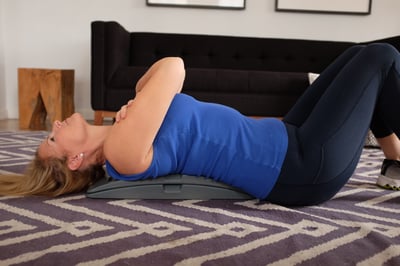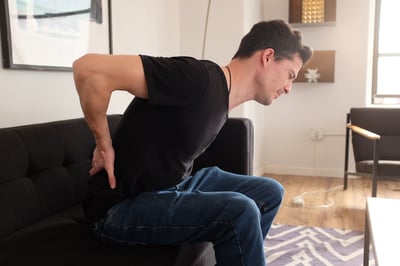After working with back patients for about 20 years, I have discovered why many patients don’t achieve back pain relief or perfect posture. To fix back pain and correct your posture, I have to focus on a patient’s structural, emotional, and digestive issues to get to the truth. Unfortunately, most doctors don’t pay attention to what the rest of the body is telling them about a patient's pain. A single-approach structural treatment plan may apply if a patient is a certain type of back pain sufferer, but may not work if an individual is a different type of back pain sufferer. In today’s post, we will focus on potential structural issues that are causing your back pain and poor posture.
Assessing Structural Inflammation
When examining a back pain sufferer, I am not looking for a blown-out disc or a compressed sciatic nerve. I am looking for inflammation, and I assess patients on a Back Pain Inflammation Index (BPI). I discover the overall inflammatory score and determine where the inflammation is coming from (remember the problem may not be in your back!). And then, I establish a self-treatment plan, or even recommend care with other health professionals to help each patient achieve back pain relief. Assessing and addressing the cause of structural, digestive, and emotional inflammation and bringing all three systems into balance is the ultimate driver of back pain relief.
There are two causes of structural pain – random and not random. If you fell off your bike and now your back hurts, that is trauma-induced pain (random). Otherwise, pain due to a structural cause is not random and tends to be caused by bad habits (sitting at your desk all day or prolonged misuse of your body, which can develop in someone who has poor posture). Listed below are few questions you can ask yourself to start to assess your structural inflammation (a full structural assessment, along with the emotional and digestive assessments, can be found in 3 Weeks to A Better Back or here):
- Did you recently start exercising differently?
- Have you been wearing different shoes?
- Were you bent over in an unusual posture for a long period of time?
- Are you aware that you clench your teeth?
- Do you sit at a computer for more than four hours a day?
- Can you turn your head further with your mouth open than with it closed?
- Do you look down when texting (“text neck”) or using your phone/tablet?
- Chances are the problem is not structural, but rather stems from a digestive or emotional issue.
- You are at moderate risk of back pain due to structural issues.
- Your pain may also require nutritional and emotional elements, but there are structural imbalances that, if addressed, will help correct your posture and provide back pain relief.
With a structural diagnosis, you should note that back pain is really spine pain, and it is either localized or compensatory. Localized issues, where the problem is at the site of pain (such as a herniated disc), will respond to traditional care from a specialist. For muscular issues, manual therapy and stretching usually does the trick.
Do You Have Pelvic Imbalance?
 Unfortunately, most causes of back pain are not local, but rather are compensatory, a global spinal reaction. These imbalances come from 5 choke points, including the feet, the pelvis, the core and mid-thoracic spine, the neck, and the temporal mandibular joint. For brevity, let’s look at the pelvis, which is the lowest part of the spine. It can be viewed as the foundation of the house with the head, neck, and shoulders representing the second floor. Pelvic imbalance can be caused by something simple, such as leaving your wallet in your back pocket and sitting on it all day. Stand in front of a mirror and place both hands on the side of your pelvis (on your hips). Do your hands line up perfectly? If not, this could be a sign of pelvic imbalance.
Unfortunately, most causes of back pain are not local, but rather are compensatory, a global spinal reaction. These imbalances come from 5 choke points, including the feet, the pelvis, the core and mid-thoracic spine, the neck, and the temporal mandibular joint. For brevity, let’s look at the pelvis, which is the lowest part of the spine. It can be viewed as the foundation of the house with the head, neck, and shoulders representing the second floor. Pelvic imbalance can be caused by something simple, such as leaving your wallet in your back pocket and sitting on it all day. Stand in front of a mirror and place both hands on the side of your pelvis (on your hips). Do your hands line up perfectly? If not, this could be a sign of pelvic imbalance.
At-Home Back Pain Relief
Once the BPI test is complete and I figure out where the pain is coming from, it is time to formulate action steps. To have success, you must commit to 3 weeks of self-treatment in every area that needs work. To improve pelvic balance, an at-home back stretch device can help relieve back pain, improve posture, and get results in as little as 4 minutes a day. In future posts, we will help you further assess and find solutions for healing your structural, digestive, and emotional causes of back pain.



